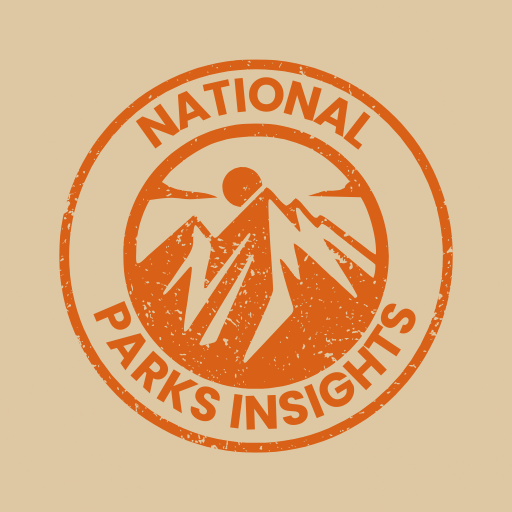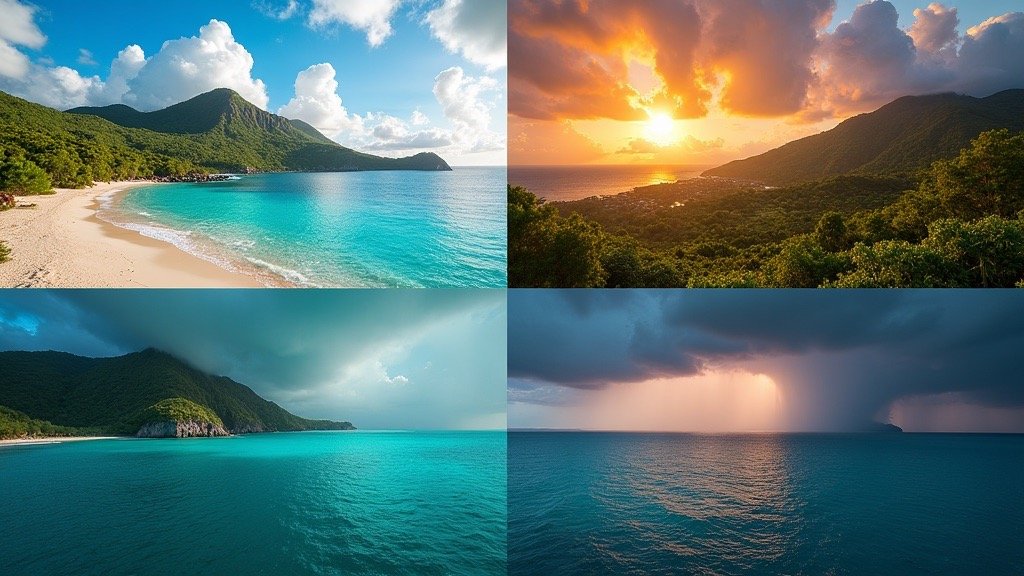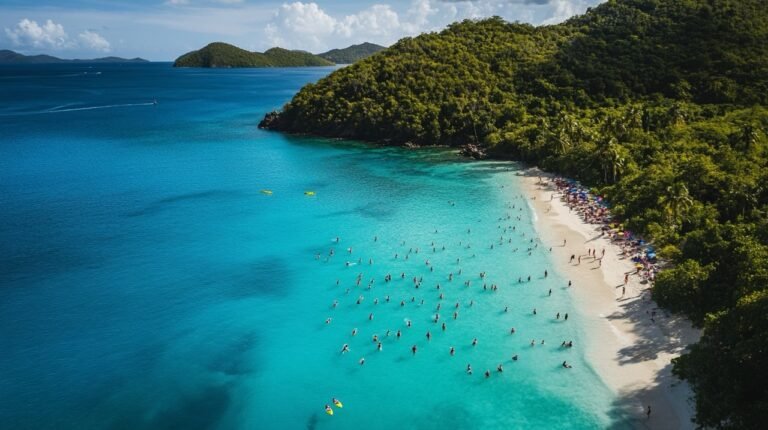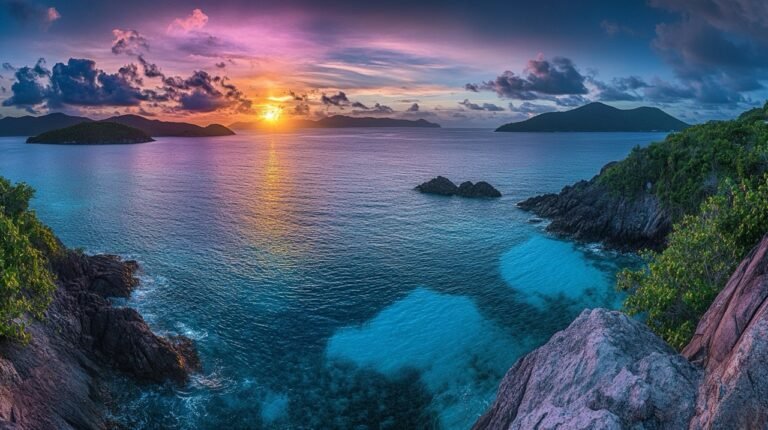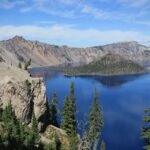Introducing Best Time to Visit Virgin Islands National Park
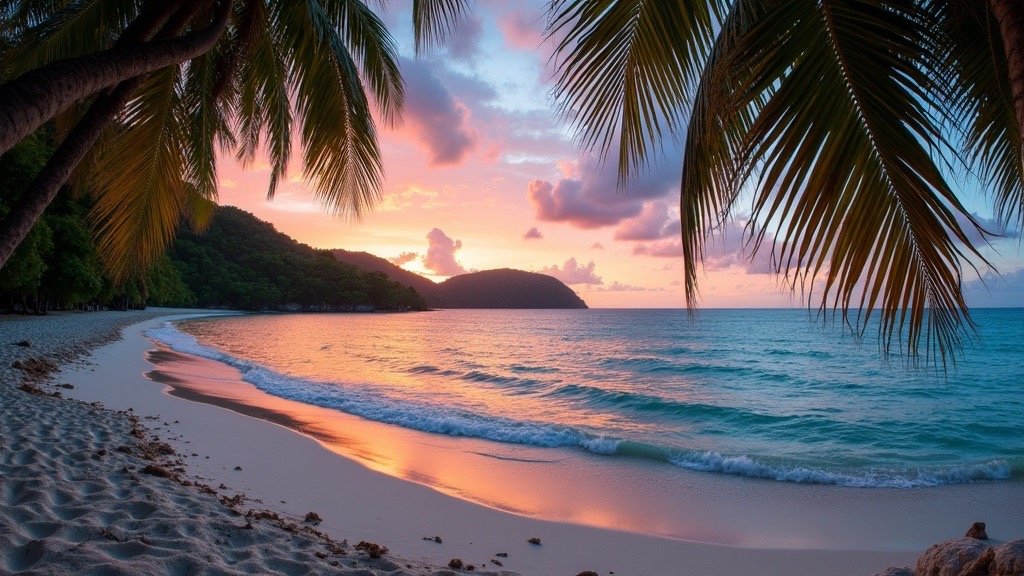
Nestled in the heart of the Caribbean, Virgin Islands National Park offers a tropical paradise for nature lovers, history enthusiasts, and beachgoers alike. With its pristine beaches, lush forests, and rich cultural heritage, the park provides a unique experience year-round.
However, choosing the right time to visit can make all the difference in your island adventure. In this comprehensive guide, we’ll explore the best times to visit Virgin Islands National Park, breaking down the year into four distinct seasons.
Whether you’re seeking sun-soaked beach days, vibrant snorkeling experiences, or peaceful hiking trails, we’ll help you plan the perfect trip to this Caribbean gem.
Ready to start planning? Check out our Ultimate Virgin Islands National Park Guide 2024for comprehensive trip planning tips!
Don’t wait to start your island adventure! Book your stay near Virgin Islands National Park through Expedia.com and begin your journey to tropical paradise today!
Year-Round Climate Overview: Tropical Bliss with Subtle Variations
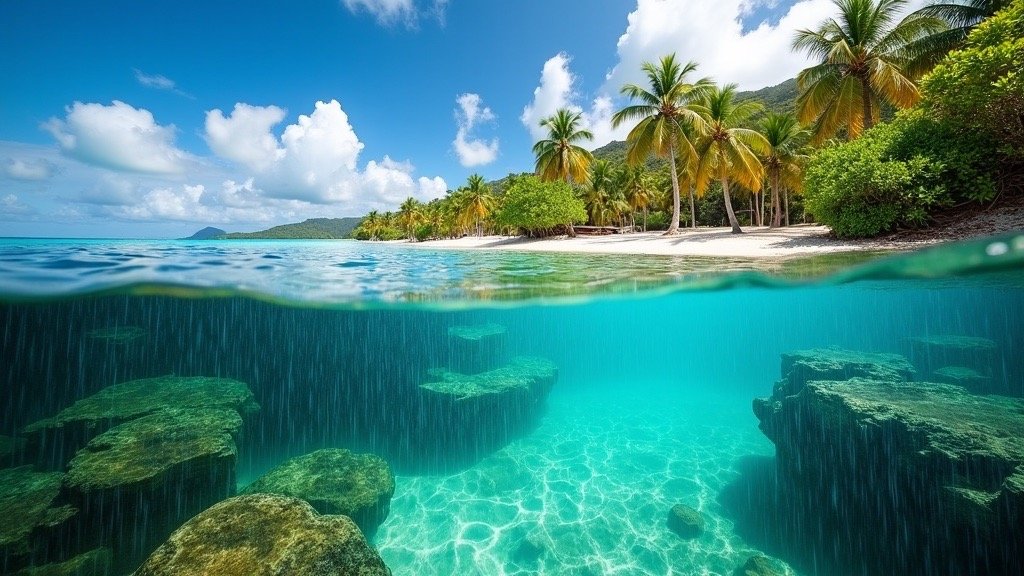
Before we dive into the specifics of each season, let’s take a look at the overall climate of Virgin Islands National Park. Understanding the general weather patterns will help you make an informed decision about the best time to plan your visit.
Temperature: Consistently Warm
Virgin Islands National Park enjoys a tropical climate with warm temperatures year-round. Here’s a quick overview of the temperature ranges you can expect:
| Season | Average High (°F) | Average Low (°F) |
|---|---|---|
| Winter | 84°F (29°C) | 72°F (22°C) |
| Spring | 85°F (29°C) | 73°F (23°C) |
| Summer | 88°F (31°C) | 76°F (24°C) |
| Fall | 87°F (31°C) | 75°F (24°C) |
Precipitation: Wet and Dry Seasons
While temperatures remain relatively stable, rainfall patterns vary throughout the year:
- Dry Season: Generally from December to April
- Wet Season: Typically from May to November
Even during the wet season, rain showers are usually brief and followed by sunshine. The average annual rainfall is around 45 inches (114 cm).
Humidity: Embrace the Tropical Air
Humidity levels are consistently high throughout the year, ranging from 70% to 80%. This tropical moisture contributes to the lush vegetation but can make the heat feel more intense.
Water Temperature: Perfect for Swimming
The Caribbean Sea around Virgin Islands National Park maintains inviting temperatures year-round:
- Winter: 79°F (26°C)
- Spring: 81°F (27°C)
- Summer: 84°F (29°C)
- Fall: 83°F (28°C)
These warm waters make swimming, snorkeling, and other water activities enjoyable throughout the year.
For more on water activities, check out our guide on Water Activities in Virgin Islands National Park
Understanding these climate patterns will help you choose the best time to visit based on your preferences for weather, activities, and crowd levels. Now, let’s explore each season in detail, starting with winter.
Ready to experience the perfect climate of Virgin Islands National Park? Book your tropical getaway through Expedia.com and enjoy paradise any time of year!
Winter (December – February): Peak Season Paradise
Winter is the most popular time to visit Virgin Islands National Park, and for good reason. The combination of ideal weather conditions and escape from colder climates makes it an attractive destination for many travelers.
Weather Characteristics
- Temperature: Daytime highs average 84°F (29°C), with nighttime lows around 72°F (22°C)
- Rainfall: Lowest of the year, with brief, occasional showers
- Humidity: Slightly lower than other seasons, making it more comfortable
- Sea Conditions: Generally calm with excellent visibility for snorkeling and diving
Pros of Visiting in Winter
- Ideal Weather: Warm, sunny days with low humidity and minimal rainfall
- Perfect Beach Conditions: Calm seas and clear waters for swimming and water sports
- Escape from Cold: A welcome respite for visitors from colder climates
- Wildlife Viewing: Opportunity to spot humpback whales migrating through the area
Cons of Visiting in Winter
- Peak Crowds: The busiest time of year with more tourists and higher prices
- Limited Availability: Accommodations and tours book up quickly
- Higher Costs: Prices for flights, hotels, and activities are at their peak
Best Activities for Winter
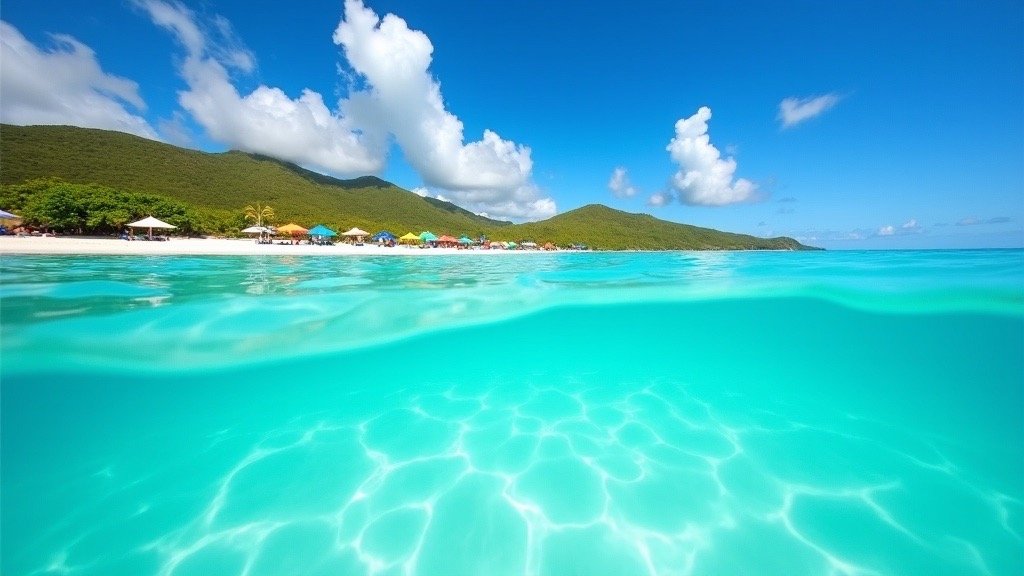
- Snorkeling at Trunk Bay’s underwater trail
- Hiking the Reef Bay Trail
- Beach-hopping along the North Shore
- Whale watching excursions (January to March)
[For more hiking adventures, explore our guide on Discover 7 Epic Hiking Trails in Virgin Islands National Park]
Tips for Winter Visits
- Book accommodations and activities well in advance
- Visit popular beaches early in the morning to avoid crowds
- Consider staying in less touristy areas for a more authentic experience
- Pack light, breathable clothing and plenty of sun protection
Winter in Virgin Islands National Park offers the quintessential Caribbean experience with perfect weather and abundant activities. However, be prepared for larger crowds and higher prices during this peak season.
Ready to escape the winter chill? Book your sunny getaway to Virgin Islands National Park through Expedia.com and bask in tropical warmth!
Spring (March – May): A Serene Transition
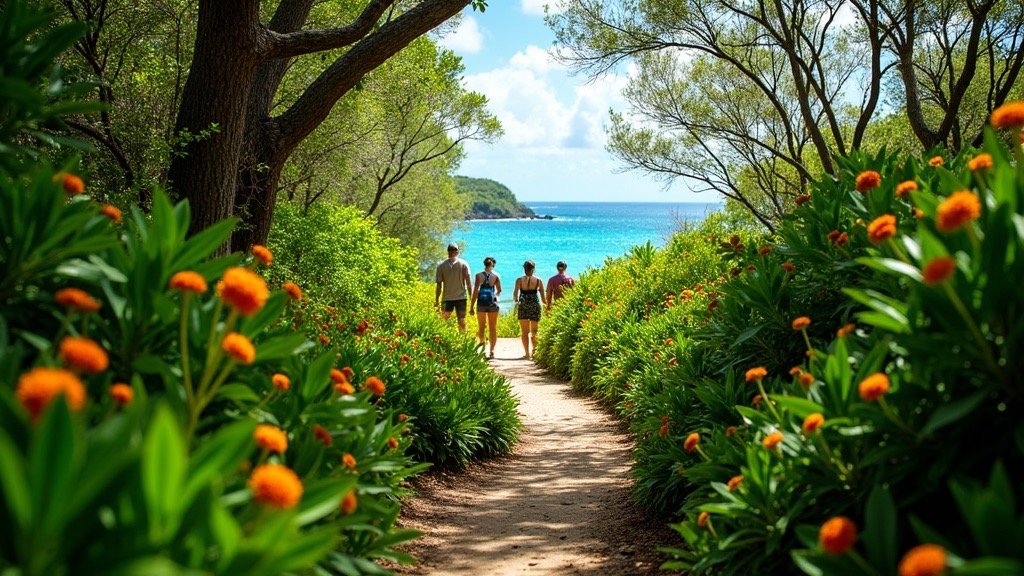
Spring in Virgin Islands National Park offers a delightful balance between the busy winter season and the quieter summer months. This transitional period brings its own unique charms and opportunities for visitors.
Weather Characteristics
- Temperature: Daytime highs average 85°F (29°C), with nighttime lows around 73°F (23°C)
- Rainfall: Slightly increased from winter, but still relatively dry
- Humidity: Gradually increasing as the season progresses
- Sea Conditions: Generally calm with excellent visibility for water activities
Pros of Visiting in Spring
- Fewer Crowds: A noticeable decrease in visitors compared to the winter peak
- Lower Prices: Accommodation and activity costs begin to drop
- Pleasant Weather: Warm days with a slight increase in refreshing breezes
- Lush Landscapes: Spring rains bring vibrant greenery and blooming flowers
Cons of Visiting in Spring
- Gradual Increase in Rainfall: More frequent, but usually brief, showers
- Rising Humidity: May become more noticeable towards the end of spring
- Some Businesses Reduce Hours: As the low season approaches, some establishments may have limited operations
Best Activities for Spring
- Hiking the Cinnamon Bay Nature Trail to see spring blooms
- Kayaking in Hurricane Hole to explore mangrove forests
- Attending the St. John Blues Festival (usually in March)
- Snorkeling at Waterlemon Cay for vibrant marine life
[For more on local events, check out our Virgin Islands National Park Events Calendar]
Tips for Spring Visits
- Pack a light rain jacket for occasional showers
- Take advantage of shoulder season deals on accommodations
- Enjoy popular beaches and trails with fewer crowds
- Book eco-tours to appreciate the lush spring vegetation
Spring offers a sweet spot for visitors who want to enjoy great weather and fewer crowds while still experiencing the vibrant energy of the islands.
Experience the perfect balance of Spring in Virgin Islands National Park! Book your trip through Expedia.com and enjoy nature in full bloom.
Summer (June – August): Tropical Tranquility
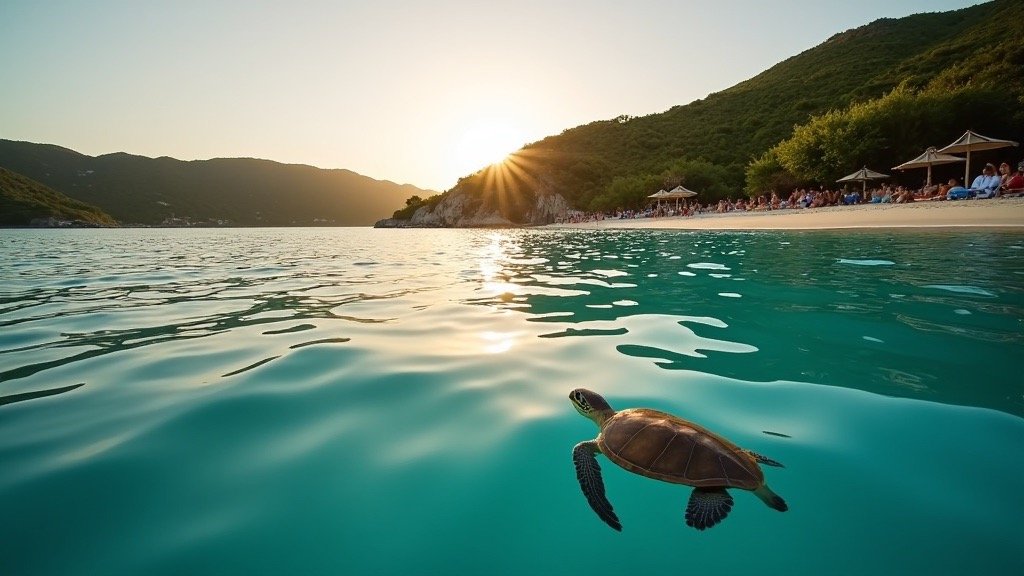
Summer in Virgin Islands National Park brings warmer temperatures and a more laid-back atmosphere. While it’s considered the low season, this time of year offers unique advantages for those seeking a quieter island experience.
Weather Characteristics
- Temperature: Daytime highs average 88°F (31°C), with nighttime lows around 76°F (24°C)
- Rainfall: Increased chance of brief, afternoon showers
- Humidity: Higher levels, making it feel warmer
- Sea Conditions: Warmer water temperatures, occasionally choppier seas
Pros of Visiting in Summer
- Fewer Tourists: Significantly reduced crowds at beaches and attractions
- Lower Prices: Best deals on accommodations and activities
- Warmer Waters: Perfect for extended snorkeling and diving sessions
- Local Festivals: Chance to experience events like the St. John Festival (usually in June-July)
Cons of Visiting in Summer
- Higher Temperatures: Heat can be more intense, especially during midday
- Increased Humidity: Can make the air feel heavier and warmer
- More Frequent Rain Showers: Though usually brief, afternoon showers are common
- Hurricane Season Begins: While rare, there’s an increased risk of tropical storms
Best Activities for Summer
- Early morning hikes on the Rams Head Trail for cooler temperatures
- Snorkeling at Maho Bay to see sea turtles in warmer waters
- Participating in the St. John Festival celebrations
- Enjoying uncrowded beaches like Salt Pond Bay
[Discover more about the park’s marine life in our guide on Snorkeling in Virgin Islands National Park]
Tips for Summer Visits
- Plan outdoor activities for early morning or late afternoon to avoid peak heat
- Stay hydrated and use plenty of reef-safe sunscreen
- Take advantage of air-conditioned accommodations for midday breaks
- Keep an eye on weather forecasts and have a flexible itinerary
Summer in Virgin Islands National Park offers a more authentic, relaxed island experience. With proper planning and heat management, it can be an excellent time to visit for those seeking tranquility and value.
Ready for a peaceful summer retreat? Book your tranquil getaway to Virgin Islands National Park through Expedia.com and enjoy the island at your own pace!
Fall (September – November): Off-Season Opportunities
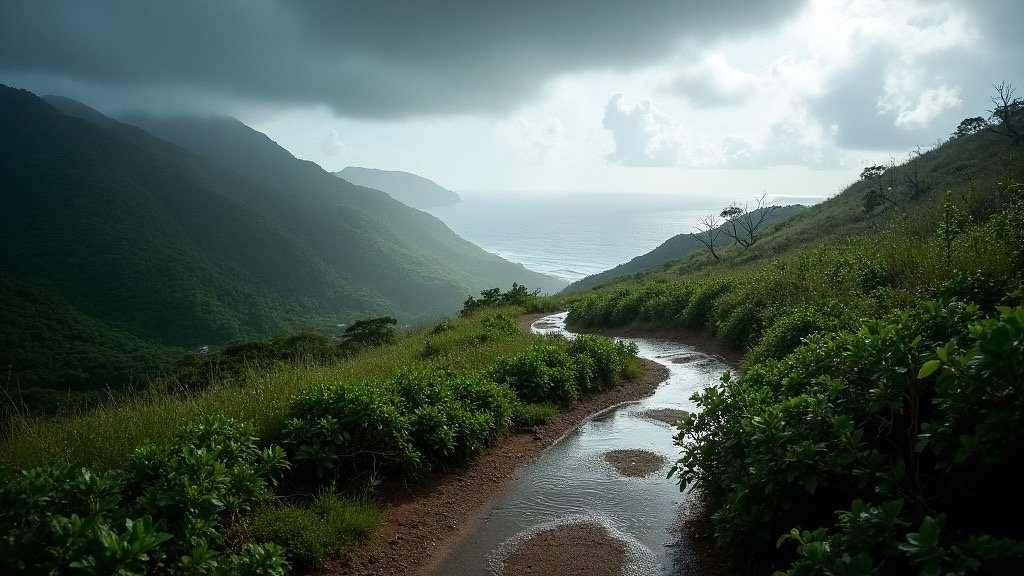
Fall in Virgin Islands National Park offers a unique blend of opportunities and challenges. This off-season period can be an excellent time for budget-conscious travelers and those seeking a more authentic island experience.
Weather Characteristics
- Temperature: Daytime highs average 87°F (31°C), with nighttime lows around 75°F (24°C)
- Rainfall: Highest chance of rain, with potential for heavy showers
- Humidity: Remains high, contributing to a warm, tropical feel
- Sea Conditions: Can be variable, with potential for rougher waters
Pros of Visiting in Fall
- Lowest Prices: Best deals on accommodations and activities
- Minimal Crowds: Enjoy beaches and trails almost to yourself
- Lush Landscapes: Increased rainfall results in vibrant, green scenery
- Authentic Experience: Interact more with locals as tourist numbers dwindle
Cons of Visiting in Fall
- Peak Hurricane Season: Highest risk of tropical storms (September-October)
- More Rainy Days: Increased chance of prolonged rain periods
- Some Businesses Closed: Certain restaurants and tour operators may have limited hours
- Variable Sea Conditions: Water activities might be restricted during rough weather
Best Activities for Fall
- Hiking the Bordeaux Mountain Trail for stunning, lush vistas
- Bird watching at Francis Bay Trail as migratory species pass through
- Exploring the Annaberg Sugar Plantation ruins without crowds
- Enjoying secluded beach days at Honeymoon Beach
Learn more about the park’s history in our guide on Historic Sites in Virgin Islands National Park
Tips for Fall Visits
- Purchase travel insurance to cover potential weather-related cancellations
- Pack rain gear and waterproof bags for electronics
- Be flexible with your itinerary to work around weather conditions
- Take advantage of off-season rates for longer stays or upgraded accommodations
Fall can be a rewarding time to visit for those comfortable with some weather uncertainty and seeking a more laid-back island experience.
Embrace the off-season charm! Book your fall adventure in Virgin Islands National Park through Expedia.com and enjoy exclusive experiences.
Special Considerations
When planning your visit to Virgin Islands National Park, keep these special considerations in mind:
Hurricane Season (June 1 – November 30)
- Peak Months: August to October
- Preparation: Stay informed about weather forecasts and park alerts
- Flexibility: Consider purchasing travel insurance for potential cancellations
Peak Tourist Seasons
- Winter High Season: Mid-December to Mid-April
- Busiest and most expensive time
- Book accommodations and activities well in advance
- Spring Break: Usually in March
- Short period of increased visitors and prices
- Popular with families and college students
Local Events and Festivals
- St. John Festival: Late June to July 4th
- Love City Live Music Festival: Usually in January
- St. John Arts Festival: February
- Virgin Islands Nice Jazz & Blues Festival: January
For a complete list of events, visit our Virgin Islands National Park Events Calendar
Tips for Visiting in Any Season
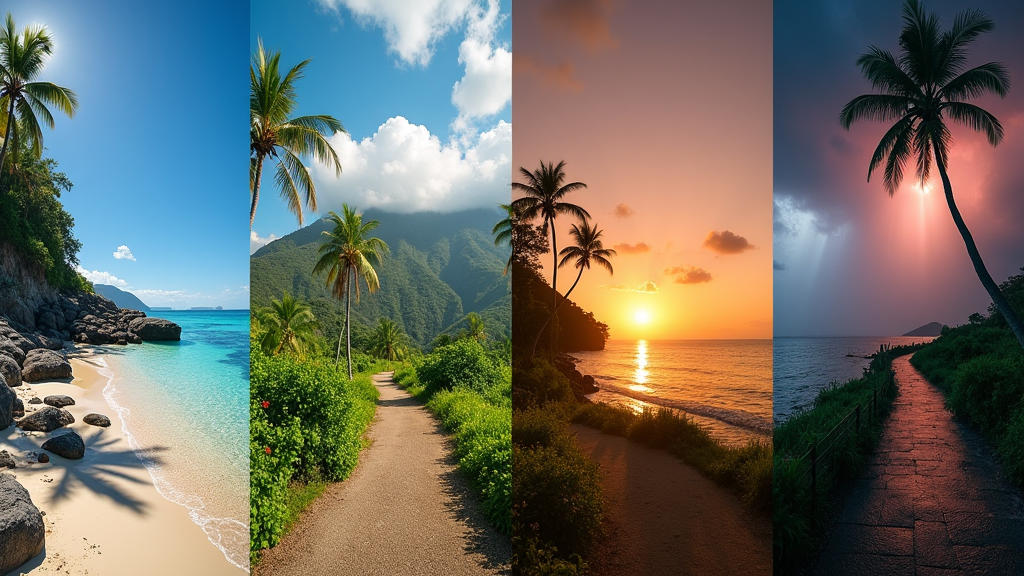
Regardless of when you choose to visit Virgin Islands National Park, these tips will help ensure a enjoyable trip:
Packing Essentials
- Reef-safe sunscreen
- Insect repellent
- Breathable, quick-dry clothing
- Hiking shoes and water shoes
- Reusable water bottle
- Waterproof phone case
Booking Accommodations
- Reserve early for high season visits
- Consider vacation rentals for more space and amenities
- Look for off-season deals and packages
Transportation Considerations
- Rent a car to explore the island (remember to drive on the left!)
- Use taxis or the VITRAN public bus for budget-friendly options
- Consider water taxis for island hopping
Eco-Friendly Practices
- Follow Leave No Trace principles
- Use reef-safe sunscreen to protect marine life
- Conserve water, as it’s a precious resource on the islands
For more on responsible tourism, check our guide on Eco-Friendly Travel in Virgin Islands National Park
By keeping these considerations and tips in mind, you’ll be well-prepared for an amazing visit to Virgin Islands National Park, regardless of the season you choose.
Ready to plan your perfect island getaway? Book your Virgin Islands National Park adventure through Expedia.com and create memories that will last a lifetime!
Your Perfect Season Awaits
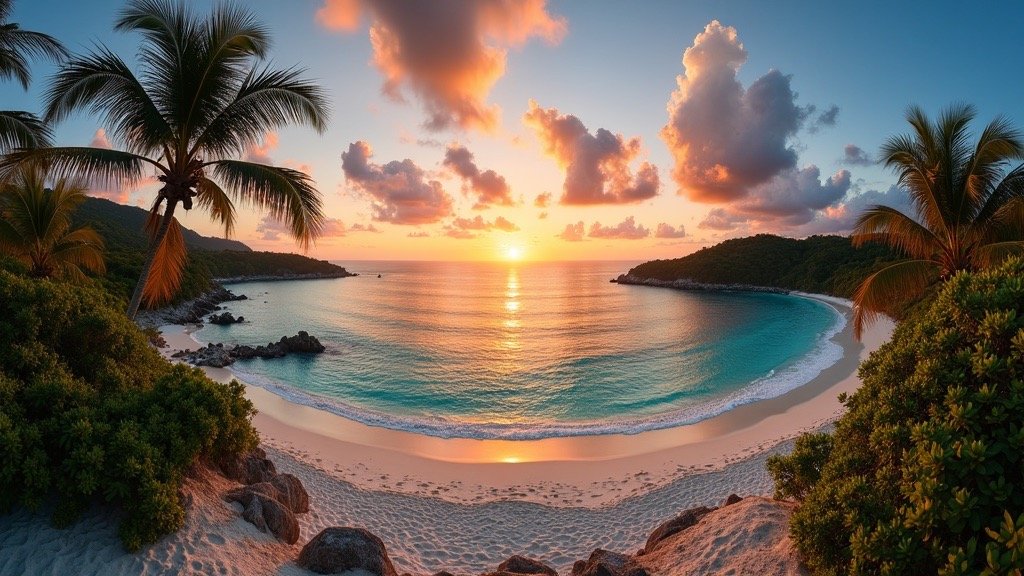
Virgin Islands National Park offers a unique and beautiful experience year-round, with each season bringing its own charm and opportunities. Whether you’re seeking the perfect beach weather, lower prices, or a chance to experience local culture, there’s an ideal time for your visit.
- Winter (December – February): Perfect for those escaping cold climates and seeking ideal beach conditions, but be prepared for higher prices and crowds.
- Spring (March – May): A sweet spot with pleasant weather, fewer crowds, and the chance to enjoy lush, blooming landscapes.
- Summer (June – August): Great for budget travelers and those who don’t mind heat, with the bonus of warm waters and local festivals.
- Fall (September – November): Ideal for adventurous travelers seeking the lowest prices and most authentic experience, but be prepared for potential weather disruptions.
Remember, the best time to visit Virgin Islands National Park ultimately depends on your personal preferences, budget, and desired activities. By considering the pros and cons of each season and following our tips, you can ensure a memorable tropical getaway no matter when you choose to visit.
FAQs: Best Time to Visit Virgin Islands National Park
- What is the absolute best time to visit Virgin Islands National Park?
The best time is generally from mid-December to April when the weather is driest and temperatures are most comfortable. However, this is also the busiest and most expensive time. - When is the cheapest time to visit Virgin Islands National Park?
The fall months (September to November) typically offer the lowest prices on accommodations and activities. However, this coincides with hurricane season, so be prepared for potential weather-related disruptions. - Is it worth visiting Virgin Islands National Park during hurricane season?
While there are risks, visiting during hurricane season (June to November) can offer great deals and fewer crowds. Just be sure to purchase travel insurance and stay informed about weather conditions. - What is the water temperature like throughout the year?
Water temperatures remain inviting year-round, ranging from about 79°F (26°C) in winter to 84°F (29°C) in summer. - Are there any annual events I should plan my visit around?
The St. John Festival in late June/early July is a major cultural event. The Love City Live Music Festival in January and the St. John Arts Festival in February are also popular. - Is it possible to avoid crowds in Virgin Islands National Park?
Visit during the shoulder seasons (May-June or November) for a good balance of pleasant weather and fewer crowds. Alternatively, explore less popular beaches and trails, even during peak season. - What’s the best time for snorkeling in Virgin Islands National Park?
Snorkeling is excellent year-round, but water clarity is often best during the dry season (December to April). Summer offers warmer water temperatures. - When is the best time for hiking in the park?
The cooler, drier months from December to April are ideal for hiking. However, trails can be less crowded during the off-season. - Are there any times of year when the park is closed?
The park is open year-round, but some facilities or trails may close temporarily due to weather conditions or maintenance. Always check the official NPS website for current conditions. - What’s the best time to see wildlife in Virgin Islands National Park?
Wildlife can be seen year-round, but bird watching is particularly good during the spring and fall migrations. Whale watching is best from January to March.
Got more questions about planning your visit? Book your Virgin Islands National Park adventure through Expedia.com for expert advice and peace of mind!
Tips for Visiting Virgin Islands National Park
To make the most of your trip to Virgin Islands National Park, keep these helpful tips in mind:
- Rent a car: While taxis are available, having your own vehicle gives you the freedom to explore at your own pace. Remember to drive on the left side of the road!
- Book accommodations early: Especially if visiting during peak season (December to April), secure your lodging well in advance.
- Pack reef-safe sunscreen: Protect both your skin and the delicate marine ecosystem by using eco-friendly sunscreen.
- Bring snorkel gear: While rentals are available, having your own ensures a perfect fit and saves money on longer trips.
- Stay hydrated: The tropical climate can be deceptively draining. Carry a reusable water bottle and refill often.
- Check ferry schedules: If staying on St. Thomas, plan your day trips to St. John around the ferry timetables.
- Respect wildlife and nature: Follow Leave No Trace principles and don’t touch or feed any animals you encounter.
- Try local cuisine: Sample Caribbean flavors at local restaurants in Cruz Bay or Coral Bay.
- Join a ranger program: The National Park Service offers guided hikes and educational programs from November to June.
- Be flexible: Weather can change quickly in the tropics. Have backup plans for rainy days.
For more detailed advice, check out our guide on Safety Tips for Virgin Islands National Park
Conclusion: Your Perfect Island Getaway Awaits
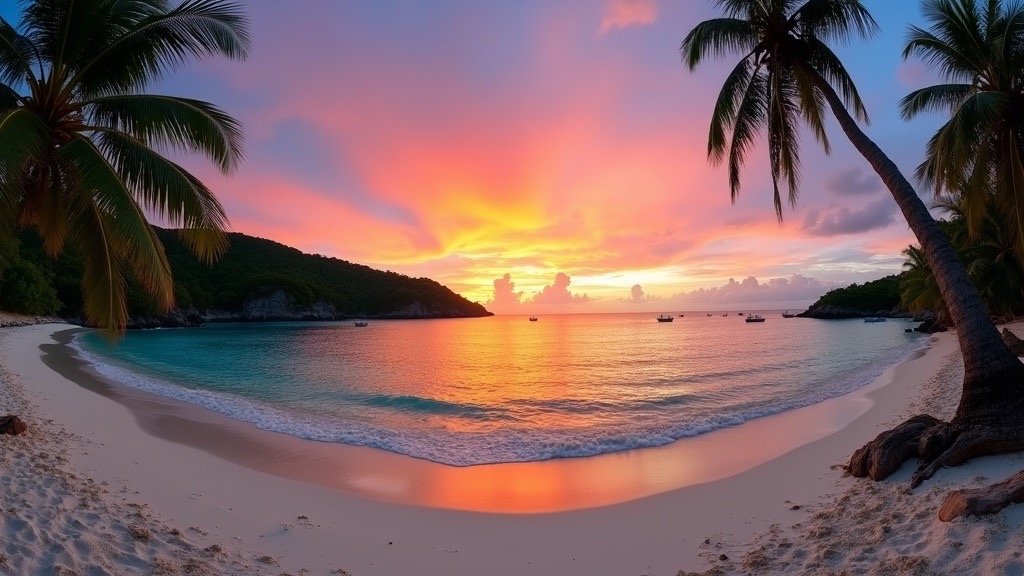
Virgin Islands National Park offers a unique blend of natural beauty, outdoor adventures, and rich cultural history that makes it a standout destination among U.S. national parks. Whether you’re seeking pristine beaches, vibrant coral reefs, lush hiking trails, or a glimpse into the Caribbean’s colonial past, this park has something for everyone.
Best Activities for Each Season
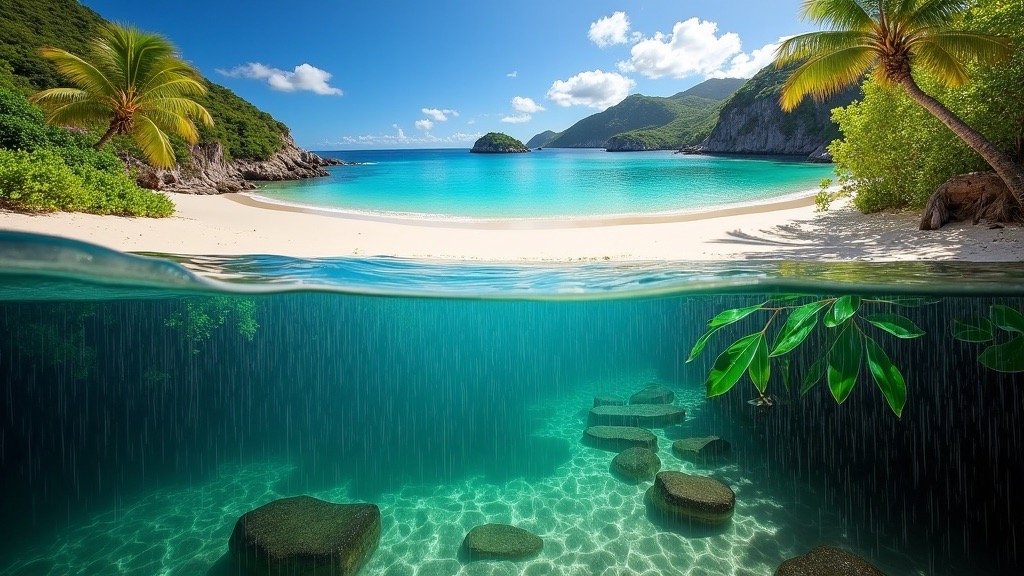
Winter (December – February)
- Peak tourist season with ideal weather conditions
- Best time for beach activities like swimming and snorkeling
- Opportunity to spot migrating humpback whales
- Hiking trails are less humid and more comfortable
Spring (March – May)
- Shoulder season with pleasant weather and fewer crowds
- Great time for hiking as trails are lush from winter rains
- St. John Blues Festival usually held in March
- Good conditions for water activities continue
Summer (June – August)
- Low season with hotter temperatures and higher humidity
- Warmest water temperatures, ideal for extended snorkeling/diving
- St. John Festival celebrations in late June/early July
- Fewer crowds at popular beaches and attractions
Fall (September – November)
- Hurricane season, with increased chance of storms
- Lowest prices on accommodations and activities
- Lush landscapes from summer rains
- Good time for bird watching as migratory species pass through
For more information click here to visit the Goverment Website
Tips for Visiting Any Time of Year
- Book accommodations early, especially for winter high season
- Rent a car to explore the island at your own pace
- Pack reef-safe sunscreen, insect repellent, and rain gear
- Stay hydrated and seek shade during midday heat
- Be flexible with plans in case of weather changes
- Check ferry schedules if staying on St. Thomas
Ready to plan your perfect island getaway? Book your Virgin Islands National Park adventure through Expedia.com and start your tropical escape today!
